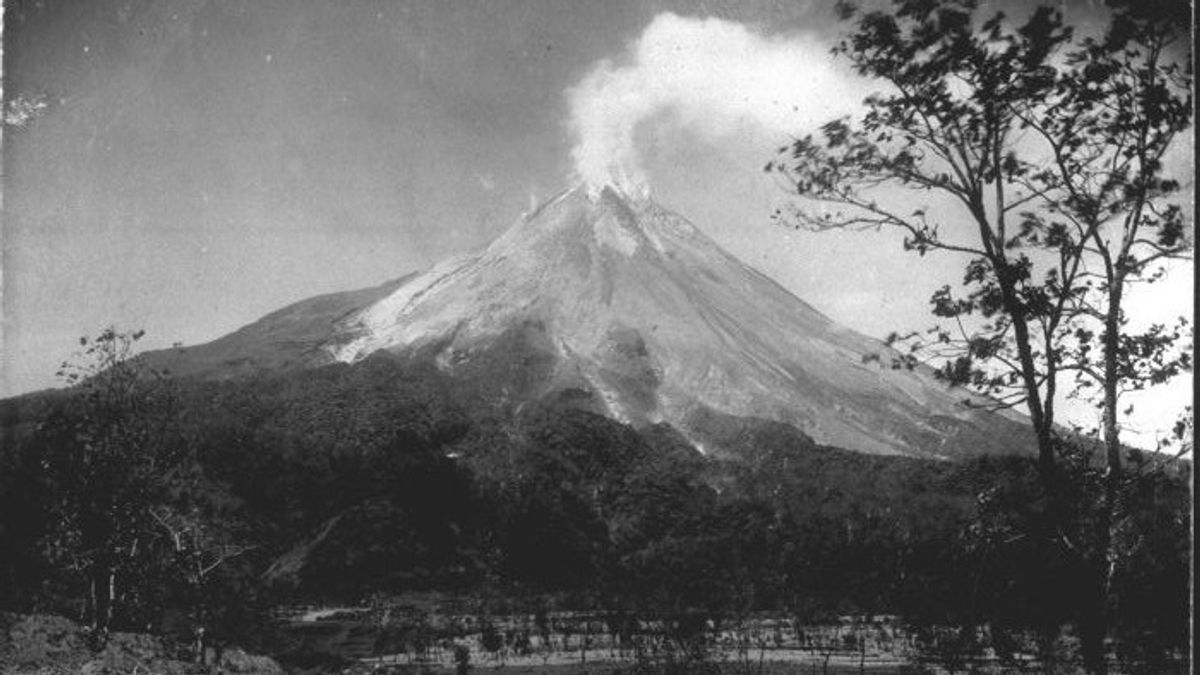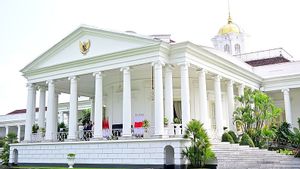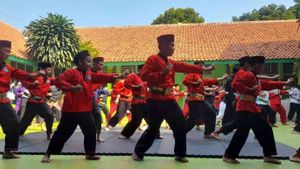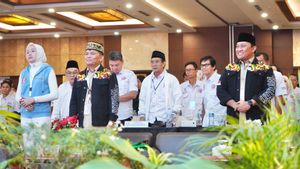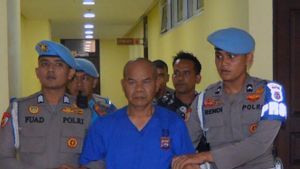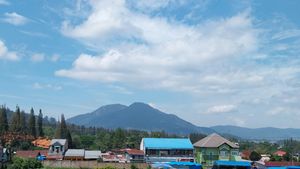JAKARTA - Merapi is the most active volcano in Java. The greatness of the mountain with an altitude of 2,930 meters is illustrated by a series of eruptions and hot clouds nicknamed 'Wedhus gembel'. Merapi has been a sacred mountain for a long time. According to belief, Merapi is directly connected to Tugu-Pal Putih, the Yogyakarta Palace, Panggung Krapyak, to Parangkusumo on the South Coast. Because of that the bond between the Javanese and Mount Merapi is so strong.
In understanding the mythology of Mount Merapi, there are two elements of Merapi that need to be known. First, Jagat Alit. Second, Jagat Ageng. Jagat Alit is described as the process of beginning and ending human life with the creator. Meanwhile, Jagat Ageng is believed to be a relationship that breaks down life between fellow communities so as to achieve life perfection.
Furthermore, as quoted by Bambang Widiatmoko in his article in Djoernal Sastra entitled Poetry Imaji Merapi (2012), it is revealed that people who live on the slopes of mountains as their natural environment and their life as macrocosm (Jagat Ageng). Then Mount Merapi is the natural environment and serves as a microcosm (Jagat Alit).
The reciprocal relationship is what makes the people on the slopes of Mount Merapi possess local wisdom. Like a form of culture in carrying out daily life with a belief system that he believes.
"If the question arises, why is it difficult for residents of the slopes of Merapi to leave their area to evacuate in connection with the Mount Merapi disaster either explosively (eruption) or elusive (flow)? Of course the answer is the strong emotional bond between the inhabitants of Mount Merapi and the existence of Mount Merapi itself in a reciprocal relationship between macrocosm and microcosm, "added Bambang Widiatmoko.
In a sense, the local people feel they are part of Mount Merapi, and vice versa. Mount Merapi has become a part of his daily life. Through this relationship, they can read the signs when Mount Merapi will endanger their lives, even ahead of the government's recommendation to evacuate.
Eruptions and eruptions
The popularity of Mount Merapi in the eyes of the world was awakened by its eruptive activity. Therefore, Merapi is much different from other mountains in Java, such as Mount Semeru. Because, Semeru is actually famous for its beautiful panorama and eternal silence. For more details regarding Mount Semeru, we have reviewed it in the article "Mount Semeru: The Residing Place of the Gods".
In the Dutch colonial era, the eruption of Mount Merapi actually attracted local and foreign artists and tourists, especially after its eruption in 1822. The famous Indonesian painter Raden Saleh was one of them.
For Raden Saleh, Merapi is a mountain that is the center of Javanese mythology, along with the South Sea. The two of them then formed a cosmological unit in the form of mountains and oceans, as well as land and water.
“Merapi (meru and fire) is an example of the center of Hindu and Buddhist cosmology, a motif favored by Raden Saleh. At least five times he painted the volcano while it was active. The three paintings show Merapi erupting during the day and have an important meaning from the point of view of art and science, "wrote Werner Kraus in the book Raden Saleh and his work (2018).

To that end, Raden Salen and a small group under the leadership of the Resident of Kedu, HJC Hoogeveen climbed the slopes of Merapi on November 9, 1865. In the group there were also the Regent of Temanggung, the Regent of Magelang, and a number of shoulder workers. At that time, Mount Merapi had been active for several weeks, spewing lava and rock fragments into the valley.
“The flames of smoke can be seen far away and are not only attractive to scientists unfamiliar with volcanoes, but also attract a steady stream of tourists to them. Dozens of 'research groups,' often with accompanying women armed with food baskets used for picnics, hiked from the direction of Muntilan to the mountains and spent the night in the last hamlets, Gemer and Sabrang, before they made it to the area called Jengger Lor, a kind of courtyard for the cone of Merapi. can be seen up close very safely, "said Wrner Kraus.
Excellent tour of the Dutch eraThe eruption of Merapi did not only attract Raden Saleh. The Tourism Board formed by the Dutch East Indies government (Batavia Vereeniging Toeristenverkeer) was also interested. The tourist agency with the acronym BVT has carefully listed Mount Merapi as one of the mandatory destinations that can be visited when visiting Java. Through his guidebook entitled Java The Wonderland (1900), Semeru became a destination discussed when mentioning the Central Java region.
"All of that attracts its own beauty about the city of Solo, with a view of two symmetrical peaks (from the mountain) Merapi and Merbaboe (Merbabu), on the other hand, and a wide-flung view of Gunug Lawu on the other," the story of the Java book The Wonderland.
As stated by Ibnu Rustamaji in the book The Influence of Indies Building Development (2020). He said that as a form of support for tourism to Mount Merapi, the Dutch colonial government then built various facilities. Starting from the road, namely the Semarang-Surakarta highway and access to the pesanggrahan at the foot of Mount Merapi-Merbabu. There are three main roads that have been built by the Dutch. Pandanaran Street, Merapi-Merbabu Street and Kates Street.
Unmitigated along Jalan Pandanaran Kompeni helped build several buildings to support recreational activities. The buildings include Villa Merapi, Societeiet, Tangsi Military, Fort Militaire Geneskundige Dients and Landraad. Meanwhile, Jalan Merapi-Merbabi was then dominated by the construction of school buildings, European private homes, hospitals and theater buildings.
Unfortunately, only a few traces of the peak of Merapi's tourism triumph. To commemorate the greatness of Merapi, if the poem from Boedi Ismayanto SA entitled Merapi (2010) can be a consolation. The following is the verse:
Merapi teaches patience
In prayer and endeavors,
As you are in the disaster area,
When nature is not friendly.
The English, Chinese, Japanese, Arabic, and French versions are automatically generated by the AI. So there may still be inaccuracies in translating, please always see Indonesian as our main language. (system supported by DigitalSiber.id)
